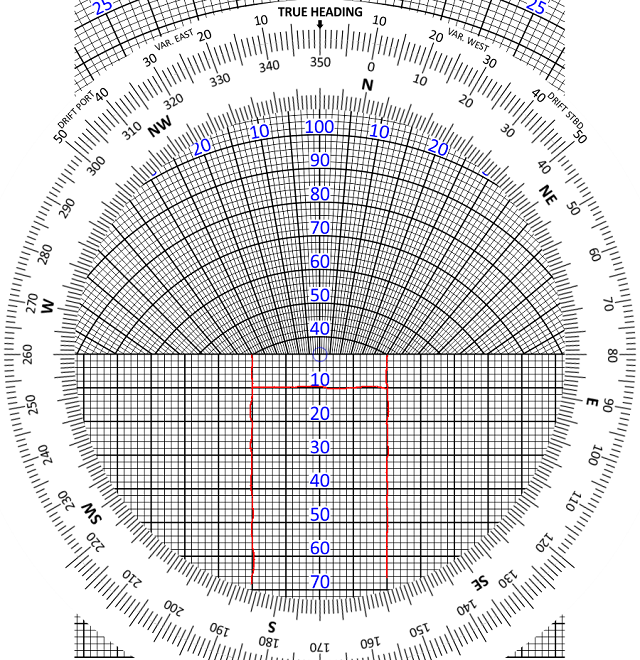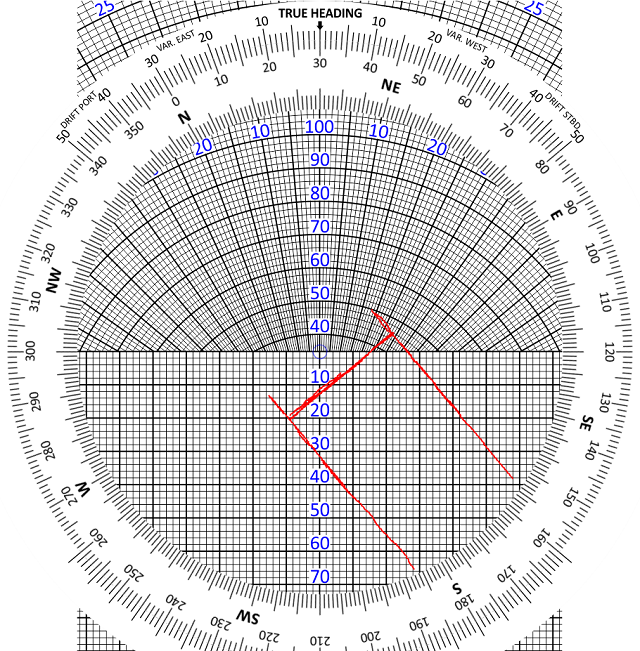The Navigation Computer: Headwind and Crosswind Limits
On occasions you can be limited by both crosswind AND headwind. You might have to land a heavy aircraft on to a single-runway airport and that runway might be short. In this case, you may be on your Landing Distance Available (LDA) performance limits and may need, say, at least 10 knots down the runway to land. At the same time, there is a crosswind.
Take this example:-
R/W 35
ATC W/V 030/10G40
Min Headwind 10 knots
Crosswind Limit 20 knots
As before, draw in the 20 knot crosswind parallel markers. But this time, in addition, draw in a 10 knot headwind limit line.

Now rotate to the direction that the wind will be coming from – in this case, 030°(M):

Note where the lines intersect the centre line – at 11 knots and 31 knots.
What this is telling you is that, when landing on R/W 35, if the wind from 030°(M) is less than 11 knots, you have less than 10 knots headwind down the runway. You cannot land. If the wind is any greater than 31 knots from 030°(M), you have more than 20 knots of crosswind component. You cannot land.
If the wind is between 11 and 31 knots from 030°(M), you have 10 knots or more of headwind component AND you have 25 knots or less of crosswind component. You can land.
Next: Tailwind Components
© 2022 terms of use privacy policy